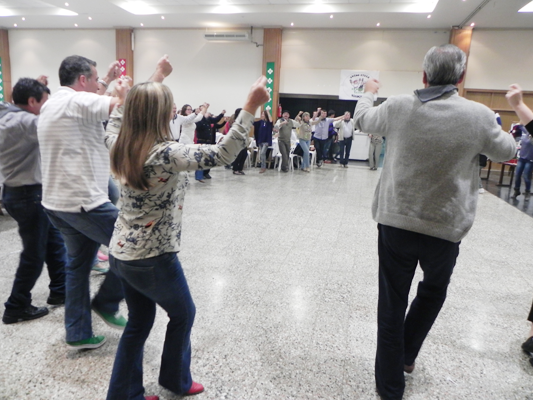basque heritage worldwide

04/24/2013

ADVERTISING
Necochea, Argentina. There are some who consider the concept of “former dantzari” as not being suitable since “a dancer always will be a dancer, even though you leave your abarkas (Basque dancing shoes) in the past.” Nevertheless, it is certain that for reasons of age, lack of time, or other reasons sometimes dancers stop dancing. Aiming to bring together all these people that can still do some steps and jumps, the Euzko Etxea of Necochea organized the Fiesta of the Ex-Dantzari, directed towards anyone who had passed through the institution. The event took place on April 13th and gathered members from the dance groups from the 40s, 50s, 60s, 70s, 80s and 90s.

[The dancers themselves contributed costumes for the exhibit. The photos not only included dances, dancers and romerias, but also shots of buildings that no longer exist (photos EE)]
A large group of people participated in the event, which was full of memories and emotional moments. Many of those originated from the exhibits in the room, one with costumes that were once used in Necochea – different from the current ones – and another with photos. Among the costumes were items worn by the “Kaskarotak”, such as old jackets with tassels and old peasant gowns, presented along with daggers, jackets and skirts.

[Euzko Etxea dancers from the 40s (photo EE)]

[Euzko Etxea dancers from the 50s (photo EE)]
The photo exhibit included images from various periods and attempted to show the groups during special moments, like during an erromeria, with live orchestras or visiting retirement homes or nursery schools. Those present were also challenged with a game of questions and answers “with questions about things that only those who were dancers would know,” according to the organizers, allowing guests to connect even more.

[Euzko Etxea dancers from the 70s (photo EE)]

[Euzko Etxea dancers from the 80s & 90s (photo EE)]
The main event was the presentation to each dancer of a small handkerchief embroidered with the phrase, “Dantzari Eguna Nechochea.” Guests received these by group, each one with their year. There was also time to dance during the event, of course. After dinner, those present left their places to unite with friends in a circle for a Fandango, and the Ezpata Dantza, or the classic Maskarada of Xiberoa.
ADVERTISING
ADVERTISING
ADVERTISING
ADVERTISING
ADVERTISING
© 2014 - 2019 Basque Heritage Elkartea
Bera Bera 73
20009 Donostia / San Sebastián
Tel: (+34) 943 316170
Email: info@euskalkultura.eus